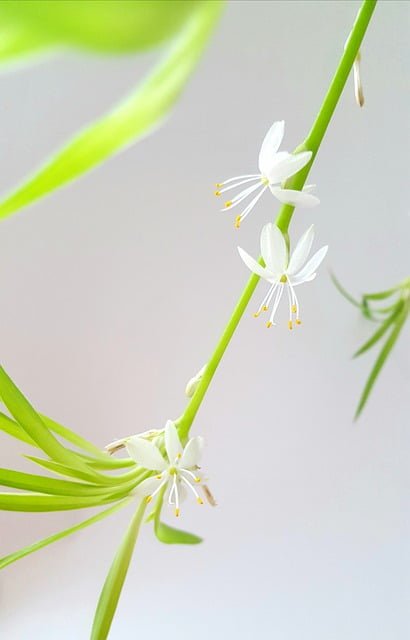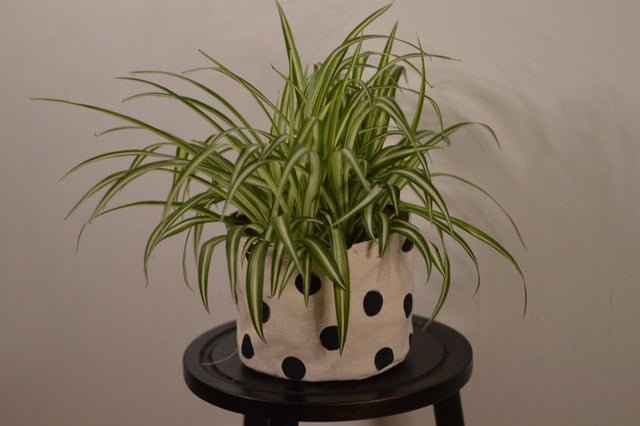This ultimate guide on spider plant care will help you in taking care of your spider plant. Get to know growing season, potting mix, pot selection, sunlight, watering, fertilizers, etc. Spider plant is one of the most famous house plant on this beautiful planet.
It is also on the list of NASA’s Air Purifying Plant. Spider plants purifies toxins from the air. Hence, not only gardeners but also health conscious person love to have this houseplant in their home. They spread really fast and you can propagate 6 to 7 plants from a single mother plant within a year.
Let’s get to know about this wonderful houseplant before learning about its care guide.
Table of Contents
Introduction
Spider plant is also known by many other names. You can call them St. Bernard’s Lily, Ribbon plant, Airplane plant, Spider ivy, etc. They can grow up to 24 inches in height. They are actually a perennial flowering plant that can grow under indirect sunlight.
You can easily propagate spider plants from “offsets” which is also called pups. The shape and appearance of these tiny pups are like spiders that’s why we call this plant as “Spider Plant.” They have star like appearance with solid green or variegated foliage.
Spider plants can easily grow in tropical to sub-tropical climate and are very hardy plants. If you will care for them a little, then there is a very less chance of plant damage. Let’s now learn about how to grow spider plants.
How To Grow Spider Plant?
To grow spider plants successfully you need to know growing season, potting mix, pot selection, propagation, etc. This will help you to determine the favourable condition required in the initial stages of plant growth.
Growing Season
You can start growing spider plants from spring to summer season very easily. However, spider plants are perennial and they can even grow during winters in places where winters are not very cool. But in temperate climate you need to protect your spider plant during winters.
Potting Mix
Spider plants love well drained but evenly moist loamy soil. You can prepare the ideal potting mix with 50% garden soil + 25% cocopeat + 25% any bulky organic manure. You can also add a teaspoon of bone meal and neem cake fertilizer for better results.
This potting mix will help to create better environment for the growth of roots. Hence it will result in good growth of spider plants.
Selection Of Pot
Well frankly speaking, you can select pot of any desirable size for growing this house plant. But prefer selecting terracotta or earthen pots as they provide good aeration to the plant roots. However, growing them in hanging pots adds beauty to the home and garden.
But make sure that the growing pot has at least 2 to 4 drainage holes at the bottom. Drainage holes helps to remove excess water from the pot. This helps to prevent root rot in plants.
Spider Plant Propagation
Well, if you are growing spider plants then you should definitely learn propagating them. This is because they produces numerous offsets every year. And you can easily propagate spider plants from these offsets.
There are various methods to propagate spider plant from offsets. But I am going to discuss one of the easiest and safest method. You can start propagating during growing season when plant starts producing offsets.

Place small growing pots filled with potting mix near the mother plant pot. Select the offsets in which tiny roots are present. Just like layering, plant these offsets having root in soil. Press the soil around the planted offsets to fix them properly.
Apply water in the soil and maintain adequate moisture. After 15 days you can detach the baby plant from the mother plant with the help of cutter.
Hurray! you have just got a new spider plant from your own garden. Try this method and tell me how it went in the comment box.
Spider Plant Care

Once you are successful in growing spider plants, then the next step is to care for them. You need to know about sunlight, watering, fertilizers requirements of the plant. Also get to know how to deal with pests and diseases on spider plant.
Sunlight
Spider plant loves bright indirect sunlight for 5 to 6 hours daily to grow well. You can keep your plant under partial to complete shade. I love to place them in hanging pots under partial shade as well as to keep them under bushy plants in open garden.
You need to protect this plant from direct sunlight. Exposure to direct sunlight can cause heavy damage to your spider plant. One more important point. If you are keeping this plant under complete shade then once after every 7 days keep them under partial shade.
This will help to improve the overall growth of the plant.
Watering
Moderate watering is good for caring for spider plants. During hot summer they will need watering once in a day. But I prefer watering according to the condition of the soil. I apply water only when the top layer of the soil seems dry.
Do not let the soil dry for longer spells as it can cause tip burns in the spider plant. Maintain adequate moisture and they will grow really well.
Fertilizers
To make the plant bushy and shiny you can add nitrogen rich fertilizers. I prefer adding tea leaf compost or any organic compost once after every 30 days for this plant.
You can use one to two handful of vermicompost and one teaspoon bone meal. However during flowering season you can also use onion peel fertilizers. But do not add over doze of fertilizers. Apply them after interval of every 30 days.
Pests And Diseases
Spider plants can get affected from scales and mealy bugs sometimes. You can use neem oil mix for dealing with these pests. However you can also check out this article to learn controlling mealy bugs in the plants.
READ MORE: HOW TO CONTROL MEALYBUGS!
Spider plants are prone to tip burn. If you will let the soil dry for longer duration then it can cause harm to your spider plant. Moreover low humidity in the atmosphere and increased soil concentration in the soil can also cause tip burn.
Repotting
Spider plants are fast growing plants. Hence there roots also develops very fast. That’s it becomes very important to look after the growth of roots. I prefer repotting them once after every year during spring season.
Prepare the new potting mix, you can use the same soil in the old pot for preparing new potting mix. According to the growth of plant repot them in a new desired pot. This will result in good growth of the root and the plant.
F.A.Q. On Spider Plant
you have a houseplant known as a spider plant, it produces a plantlet. what can you do with the plantlet when it falls off?
You can plant them in a new pot to propagate spider plant.
Are Spider plants toxic to cats?
Spider plants are non toxic to cats. You can easily keep spider plants around your pets. This houseplant is recognized by American Society For The Prevention Of Cruelty To Animals (ASPCA) as a non-toxic plant to cats.
Why are the tips of my spider plants turning brown?
If soil remains dry for longer spells then your spider plants can get affected from browning of tips. However excess salt accumulation in the soil can also cause tip burn. To prevent tip browning, maintain adequate moisture in the soil and take care of the drainage.
How often should you water spider plant?
Spider plant loves moderate watering. During summer season you will need to water more frequently to keep the soil evenly moist. There is no fixed time frequency for watering any plant. Prefer watering your plant according to the need and soil condition. Do not let the soil dry for longer spells.
What soil is best for spider plants?
Spider plant prefers well drained, loamy soil that has pH near to 7.
Author’s Note
I guess you are now clear on spider plant care. If you have any idea, suggestions or queries then let me know by commenting below. You can also connect with Agriculture Review on Facebook and Instagram.




